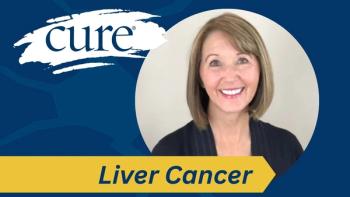
Frontline Treatment for Chronic Lymphocytic Leukemia Not One-Size-Fits-All
There are now more personalized treatment options for patients with CLL.
Frontline treatment for chronic lymphocytic leukemia (CLL) is no longer the same for everyone, as disease characteristics and discussions between the patient and their providers are taken into consideration when deciding on the optimal therapeutic approach.
“For previously untreated patients with CLL who require therapy, you look at the age, the comorbidities, the functional status and FISH results,” according to Bruce Cheson, M.D., professor of Medicine, head of Hematology, deputy Chief, Division of Hematology/Oncology, Georgetown University Hospital, Lombardi Comprehensive Cancer Center.
Based on these factors, Cheson says that three key patient subsets have emerged in the frontline CLL setting: patients without a 17p deletion, del(17p) who are eligible for chemoimmunotherapy, patients without a del(17p) who are not eligible for chemotherapy, and patients who harbor a del(17p).
In a recent presentation, Cheson described the treatment choices for each of these three patient categories, noting that, regardless of the treatment, “a clinical trial is always the preferred option.”
Chemoimmunotherapy Eligible, No 17p Deletion
Patients who are candidates for chemoimmunotherapy who do not harbor a 17p deletion can be treated with fludarabine, cyclophosphamide and Rituxan (rituximab) (FCR); bendamustine and Rituxan (BR); or the BTK inhibitor Imbruvica (ibrutinib).
Cheson said that for years there was controversy over whether the first or second combination was the better chemoimmunotherapy regimen, until the phase 3 CLL10 trial validated both treatment options as acceptable.
The CLL10 trial randomized 564 treatment-naïve patients with CLL to either fludarabine, cyclophosphamide and Rituxan or to bendamustine and Rituxan. Patients did not harbor 17p deletion and were in good physical condition. The results showed that bendamustine and Rituxan was noninferior to the triplet of fludarabine, cyclophosphamide and Rituxan, and was associated with lower toxicity.
At 37.1 months follow-up, the median progression free survival (PFS) was 41.7 months with bendamustine and Rituxan versus 55.2 months with fludarabine, cyclophosphamide and Rituxan. Adverse events (AEs) occurring at higher rates in the fludarabine, cyclophosphamide and Rituxan versus the bendamustine and Rituxan arm included neutropenia (84.2 percent vs 59 percent), anemia (13.6 percent vs 10.4 percent), thrombocytopenia (21.5 percent vs 14.4 percent), infection (39.1 percent vs 26.8 percent) and secondary neoplasm (6.1 percent vs 3.6 percent).
The efficacy of Imbruvica in frontline CLL was established in the phase 3 RESONATE-2 trial, which compared the oral agents Imbruvica and chlorambucil in 269 patients aged 65 years or older with previously untreated CLL who did not harbor the 17p deletion and had not received warfarin.
The median PFS was not reached with Imbruvica versus 18.9 months with chlorambucil. The estimated two-year OS rate was 98 percent versus 85 percent, respectively. AEs leading to discontinuation occurred in 9 percent of the Imbruvica arm compared with 23 percent in the chlorambucil group.
“This study clearly established Imbruvica as a first-line therapy for patients with CLL,” said Cheson.
When discussing Imbruvica versus chemotherapy options with patients, Cheson covers delivery method (oral Imbruvica vs IV chemotherapy), toxicity (usually higher with chemotherapy) and length of treatment (“indefinitely” with Imbruvica versus “six months and done” with chemotherapy).
Chemoimmunotherapy Ineligible, No 17p Deletion
For patients who are unable to tolerate “heavy-duty” chemotherapy (FCR, BR), Cheson said the optimal treatment choices are Imbruvica (based on RESONATE-2, discussed above) or the combination regimen of the anti-CD20 agent Gazyva (obinutuzumab) and chlorambucil.
The efficacy of the Gazyva /chlorambucil regimen in frontline CLL was established in the phase 3 CLL11 trial, which compared Gazyva /chlorambucil (333 patients), Rituxan/chlorambucil (330 patients) and chlorambucil alone (118 patients) in 781 patients with treatment-naïve CLL, no 17p deletion, and comorbidities (Cumulative Illness Rating Scale score greater than 6 and/or CrCl less than 70 mL/min).
The overall response rates were comparable in the Gazyva (77.3 percent) and Rituxan (75.7 percent) arms, and both were significantly better than chlorambucil alone (31.4 percent). However, the complete response rate was higher with the Gazyva combination (22.3 percent) compared with the Rituxan regimen (7.3 percent) and chlorambucil alone (0). Additionally, the Gazyva arm had a greater likelihood of becoming minimal residual disease—negative than the Rituxan arm in the bone marrow (19.5 percent vs 2.6 percent) and blood (37.7 percent vs 3/3 percent).
Combining Gazyva with chlorambucil also improved PFS versus the addition of Rituxan to chlorambucil. With overall survival (OS), however, there was a trend for improvement with Gazyva, but a benefit had not yet been achieved.
“Based on these data one can conclude that the regimen of obinutuzumab and chlorambucil for this group of patients is superior to Rituxan and chlorambucil, and is a useful regimen for these patients,” said Cheson.
17p Deletion
For patients with 17p deletion CLL, Cheson said there are now data showing that Imbruvica is the optimal treatment choice. One key study was a median three-year follow-up of 132 patients with symptomatic treatment-naïve or relapsed/refractory CLL or small lymphocytic lymphoma who received single-agent Imbruvica. The 30-month PFS rate was 48 percent, 74 percent and 87 percent, in patients with the 17p deletion, del (11q) and no deletions, respectively. The estimated 30-month OS rates were 65 percent, 85 percent and 90 percent, respectively.
Cheson said the impressive 17p deletion survival curve in this analysis was a refreshing change compared with historical survival data for the 17p deletion population. “For those of us who have been around a long time, the typical curve for patients with 17p deletion is kind of straight downward, with a median survival that’s rather short.”
Outside of the three main frontline CLL treatment subgroups he described, Cheson also noted that for frail patients, “Ibrutinib is a great choice. Some physicians still give an anti-CD20 agent.”
Next Steps
Looking ahead in this setting, Cheson said, “There are some ongoing and recently completed studies in untreated CLL that are of considerable interest.”
These include the phase 3 PCYC-1130-CA study (
Cheson said the ongoing study in this setting he “likes the best” is the phase 3 ALLIANCE A041202 study (
“I think this is a study that may well define frontline therapy for patients with CLL,” said Cheson.




